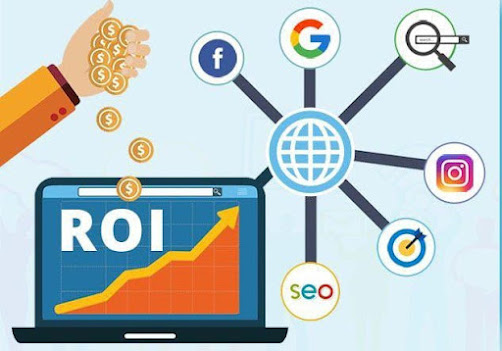Businesses are constantly seeking ways to maximize their Return on Investment (ROI) in digital marketing efforts. With an array of platforms and strategies available, understanding the metrics that truly matter is paramount. In this blog post, we'll delve into the key metrics essential for maximizing ROI in digital marketing services.
1. Conversion Rate
Conversion rate is a fundamental metric that measures the percent of website visitors who take a desired action, such as making a purchase, filling out a form, or subscribing to a newsletter. By analyzing conversion rates, businesses can gauge the effectiveness of their digital marketing campaigns in driving valuable actions. Improving conversion rates often involves optimizing website design, content, and user experience to guide visitors towards the conversion points.
2. Customer Acquisition Cost (CAC)
Customer Acquisition Cost (CAC) represents the average amount of money spent to acquire a new customer through digital marketing channels. Calculating CAC allows businesses to evaluate the efficiency of their marketing spend and make informed decisions about resource allocation. Lower CAC while maintaining or increasing conversion rates is a key strategy for maximizing ROI in digital marketing services.
3. Customer Lifetime Value (CLV)
Customer Lifetime Value (CLV) estimates the total value a customer brings to the business over the entire relationship. By understanding CLV, businesses can assess the long-term productivity of retaining and acquiring customers through digital marketing efforts. Maximizing CLV involves nurturing customer relationships, providing exceptional service, and delivering ongoing value to encourage repeat purchases and loyalty.
4. ROAS or Return on Advertising Spend
ROAS or Return on Advertising Spend measures the revenue created for every dollar spent on advertising. It's a critical metric for evaluating the effectiveness of digital advertising campaigns across various channels such as social media, search engines, and display networks. Optimizing ROAS involves analyzing campaign performance, targeting high-value audiences, and allocating budget to the most profitable channels and tactics.
5. Click-Through Rate or (CTR)
CTR or the Click-Through Rate measures the percent of people who click on a digital ad or link compared to the total quantity of impressions. The high CTR indicated that an ad is resonating with its target audience and driving engagement. Improving CTR involves crafting compelling ad copy, using relevant imagery, and targeting specific audience segments to increase relevance and interest.
6. Cost Per Click (CPC)
Cost Per Click (CPC) represents the average amount paid for each click on a digital ad. Monitoring CPC helps businesses control advertising costs and optimize campaign performance. Lowering CPC requires a combination of factors, including improving ad quality scores, refining targeting parameters, and bidding strategically on keywords to maximize ad placement efficiency.
7. Website Traffic Sources
Analyzing website traffic sources provides insights into the effectiveness of various digital marketing channels in driving visitors to a website. By identifying the sources that generate the most traffic and conversions, businesses can allocate resources towards the most productive channels and optimize their marketing strategies accordingly. Monitoring traffic sources also helps identify opportunities for diversification and expansion into new channels to reach broader audiences.
Conclusion
Maximizing ROI in digital marketing services requires a comprehensive understanding and strategic approach to key performance metrics. By focusing on metrics such as conversion rate, CAC, CLV, ROAS, CTR, CPC, and website traffic sources, businesses can optimize their marketing efforts to drive meaningful results and achieve sustainable growth in today's competitive landscape.
You May Also Read:

Comments
Post a Comment